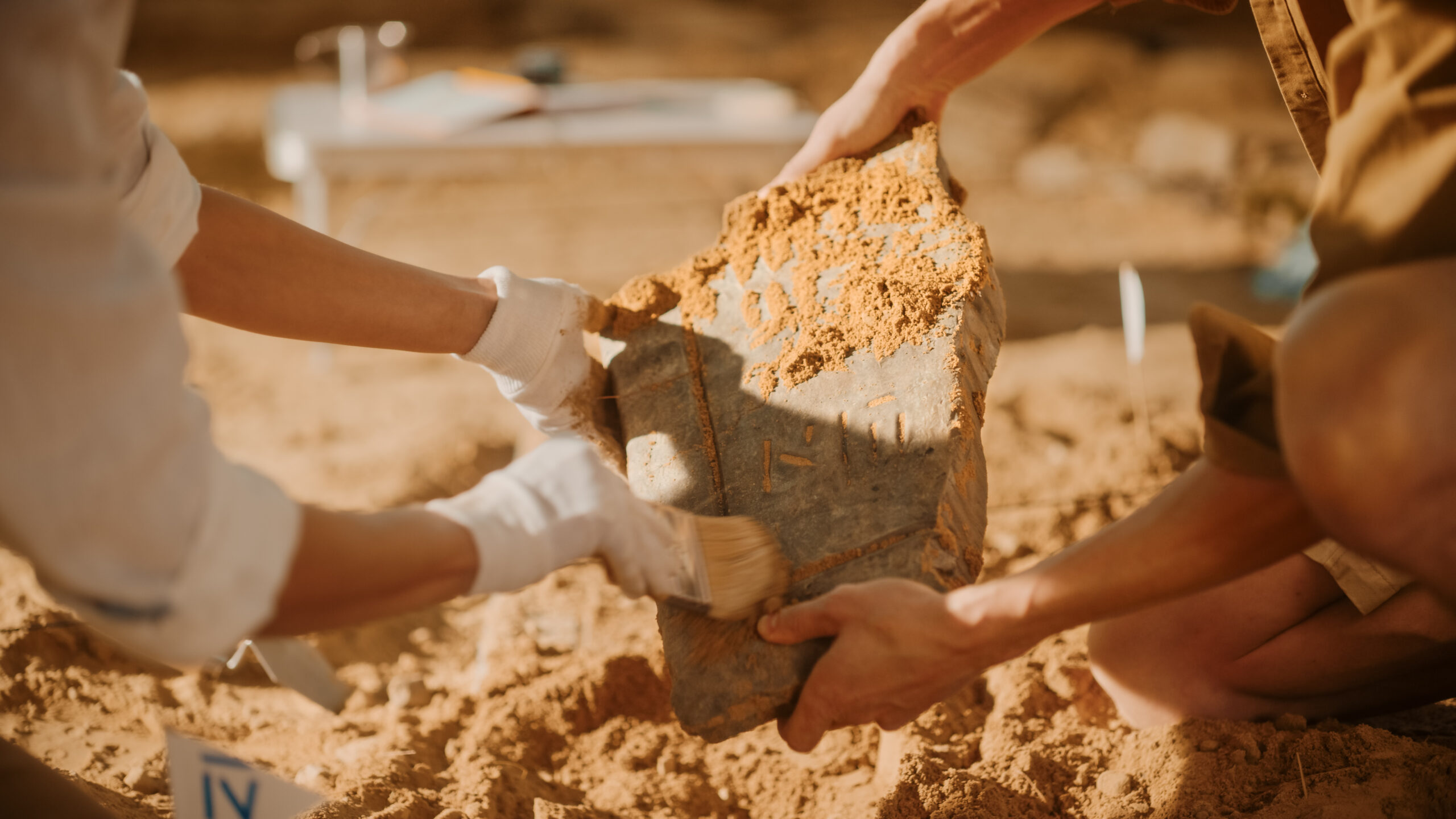Archaeologists have uncovered intriguing evidence of what may be an ancient Israelite palace dating back approximately 2,800 years at a site in Jordan that scholars believe to be the biblical Mahanaim. The discovery consists of decorated stone blocks featuring carved scenes of lions and banquets, found scattered across a hilltop near modern-day Dayr Allah.
In a groundbreaking study published in the Tel Aviv: Journal of the Institute of Archaeology, researchers Prof. Israel Finkelstein of Haifa University and Prof. Tallay Ornan of Hebrew University in Jerusalem have identified these artifacts as likely remnants from the Kingdom of Israel’s administration in the region. The researchers reached this conclusion by comparing the iconography on the blocks to similar drawings found at another Israelite site in Sinai.
Rich Biblical History
Mahanaim, mentioned 13 times in the Old Testament, holds profound significance in biblical narratives. The name, meaning “two camps” in Hebrew, first appears in Genesis 32:2. It was here that Jacob encountered Laban and established a covenant, and where the pivotal event of Jacob wrestling with an angel occurred, leading to his name being changed to Israel (Genesis 32:31; Hosea 12:4).

The site’s importance continued throughout biblical history. When the Transjordan territory was divided among the tribes of Israel, Mahanaim was positioned at the intersection of Gad and East Manasseh (Joshua 13:26, 30) and was designated as one of the Levitical cities (Joshua 21:38; 1 Chronicles 6:80).
During the turbulent period of Israel’s early monarchy, Mahanaim served as a crucial political center. After Saul’s death, his military commander Abner established Ishbosheth, Saul’s son, as king over Israel from Mahanaim (2 Samuel 2:8, 12, 29). Later, when King David fled from his son Absalom’s rebellion, he sought refuge in Mahanaim (2 Samuel 17:24, 27), where he received support from a Gileadite named Barzillai (2 Samuel 19:32). The site’s strategic importance continued into Solomon’s reign, when it became one of his administrative centers (1 Kings 4:14).
Archaeological Discoveries
The site consists of two adjacent mounds situated along a bend in the Zarka River, which scholars have long identified as the biblical Jabbok River. The western mound, known today as Tall adh-Dhahab al-Gharbi, yielded the most significant finds, including massive decorated sandstone blocks weighing up to 200 kilograms. These blocks were discovered during excavations conducted between 2005 and 2011 by a German team led by Prof. Thomas Pola of Dortmund University.
Based on the decorative style, the researchers date the remains to the first half of the eighth century BCE, coinciding with the peak of the Kingdom of Israel’s power under the reigns of Kings Joash and Jeroboam II. During this period, the Northern Kingdom of Israel, with its capital in Samaria, controlled territory stretching from Sinai to modern-day Lebanon, including parts of Transjordan.
𝐀𝐫𝐜𝐡𝐚𝐞𝐨𝐥𝐨𝐠𝐲 𝐛𝐫𝐞𝐚𝐤𝐭𝐡𝐫𝐨𝐮𝐠𝐡 𝐚𝐟𝐭𝐞𝐫 𝐟𝐫𝐞𝐬𝐡 𝐞𝐯𝐢𝐝𝐞𝐧𝐜𝐞 𝐨𝐟 𝟐,𝟖𝟎𝟎-𝐲𝐞𝐚𝐫-𝐨𝐥𝐝 𝐩𝐚𝐥𝐚𝐜𝐞 𝐟𝐨𝐮𝐧𝐝 :
— Faerie 🧡 (@LiquidFaerie) November 25, 2024
Incised ashlar blocks found at a historic site in Jordan may have led to a major archaeological breakthrough.
The stone blocks… pic.twitter.com/1qSE9XJ4E4
Recent excavations at Dhahab West have also revealed what appears to be part of a monumental building from the Herodian period. Scholars believe this structure may be part of the Hellenistic and Roman site known as Amathus, as described by the historian Josephus, indicating the location’s continued importance well into the Roman period.
Archaeological and Biblical Perspectives
The researchers emphasize that while the archaeological evidence confirms a strong Israelite administrative presence in the region, it does not necessarily validate the historicity of the biblical narratives themselves. Rather, the findings help explain why the biblical authors chose to set important foundational stories in this location.
The site’s significance even echoes in the poetic passages of the Old Testament. The Song of Solomon 6:13 makes a notable reference to “the dance of Mahanaim” (or “dance of the two camps” in some translations), suggesting the site’s cultural importance extended beyond its political and administrative functions.
This archaeological find adds another piece to the complex puzzle of understanding the relationship between biblical narratives and historical reality in the ancient Near East. While the exact nature of the building these blocks once formed remains under investigation, their discovery demonstrates the significant Israelite presence in Transjordan during the Iron Age, a period roughly corresponding to the First Temple Period in biblical chronology.




